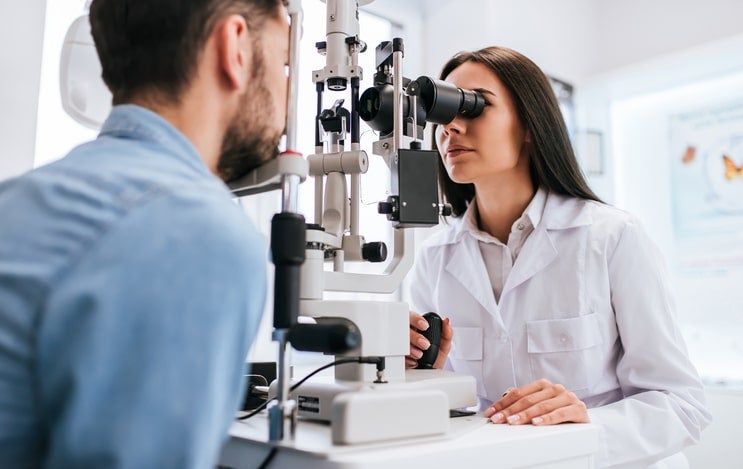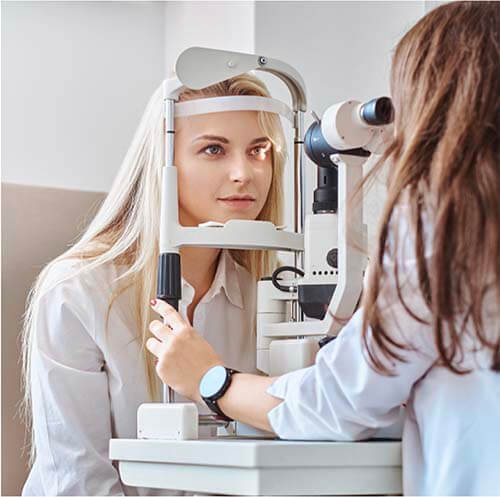Compassionate Eye Doctor: Expert Care for Riverside Residents
The Comprehensive Eye Exam: What to Expect Throughout Your Visit to the Eye Doctor
A browse through to the eye doctor for a comprehensive eye test is even more than a regular exam; it is an important action in securing your visual health. What precisely occurs during the eye health and wellness analysis, and exactly how does it influence the prescription process?
Initial Examination
The first appointment during an eye examination functions as a vital structure for recognizing an individual's aesthetic wellness requirements. This phase sets the tone for the entire evaluation procedure, allowing the optometrist to collect vital info regarding the patient's medical history, way of living, and particular vision concerns. By diligently assessing any kind of pre-existing conditions, medicines, or previous surgical procedures, the eye treatment expert can customize the exam to resolve specific needs properly.

Additionally, the preliminary examination is a possibility for people to articulate any concerns or problems, promoting a joint relationship with their doctor. This communication not only makes certain that the client feels educated and comfy yet additionally empowers them to get involved proactively in their eye health monitoring. Jointly, these discussions allow the eye doctor to devise an individualized assessment plan, guaranteeing optimal care and exact medical diagnosis.
Aesthetic Acuity Examination
Kicking off the core elements of an eye evaluation, the aesthetic acuity test is made to examine the intensity and quality of a person's vision. This crucial evaluation helps identify just how well a person can determine letters or symbols at a standardized range, normally using a Snellen chart (Opticore Optometry). The chart consists of rows of letters that reduce in dimension from leading to bottom, with the patient placed at a popular range of 20 feet
During the examination, the person is asked to cover one eye and review aloud the tiniest line of letters they can see plainly. This process is duplicated for the other eye. The outcomes are videotaped as a fraction, with 20/20 vision suggesting normal aesthetic skill-- where the person can see at 20 feet what a person with regular vision can see at that range.
The visual skill examination additionally recognizes possible refractive mistakes such as hyperopia, astigmatism, or nearsightedness, which might necessitate rehabilitative lenses. By developing a baseline of visual performance, the test is an essential diagnostic tool that helps the eye care professional in establishing an ideal treatment plan customized to the patient's distinct aesthetic needs.
Eye Health Analysis
Following the visual acuity test, a comprehensive eye wellness evaluation is performed to ensure the general wellness of the eyes. This crucial section of the eye examination entails a comprehensive evaluation of both the outside and interior structures of the eye. The eye doctor or eye doctor begins by analyzing the eyelids, cornea, conjunctiva, and sclera for any type of indications of infection, swelling, or irregularities. Using specialized tools like a slit light, the specialist gets an amplified sight of the eye's anatomy, making it possible for thorough evaluation.
With the use of ophthalmoscopy or fundus photography, the retina, optic nerve, and blood vessels are thoroughly reviewed. In numerous situations, pupil extension is carried out to improve presence of the inner eye structures, although this might result in short-lived light sensitivity for the person.
Furthermore, intraocular stress is measured to screen for glaucoma risk. This is generally done making use of tonometry, which can detect elevated pressure levels that could suggest possible damage to the optic nerve. Collectively, these analyses form an extensive evaluation to keep ocular health and wellness.
Refraction and Prescription
Refraction is a sophisticated procedure carried out by eye treatment specialists to establish the specific lens power required to fix refractive errors such as myopia, presbyopia, astigmatism, and hyperopia. The objective of this procedure is to assess how light bends as it passes via the eye, enabling the specialist to determine whether rehabilitative lenses are essential for enhanced aesthetic skill.
During the refraction process, the person is asked to look via a phoropter, a tool that has numerous lenses. The professional will systematically alter these lenses and ask the person to contrast quality between choices till the ideal possible vision is accomplished. This procedure is important in crafting an accurate prescription that defines the suitable lens power for spectacles or contact lenses.
The prescription originated from this procedure not just maximizes vision but additionally functions as a foundation for choosing ideal corrective eyeglasses. It is important to ensure that these details prescriptions are consistently updated, as modifications in vision can happen gradually, emphasizing the value of regular eye evaluations. This thorough attention to detail assists preserve clear, comfy vision in every day life.
Follow-Up Suggestions

During a follow-up check out, the eye medical professional will conduct a collection of examinations to review visual skill and look for any type of changes in vision that could necessitate an upgrade to the prescription. Furthermore, the follow-up supplies a possibility to talk about any pain or problems experienced with existing eyewear. Changes can be made to make sure comfort and effectiveness, whether via lens alteration or frame changes.
For individuals with ongoing problems such as glaucoma, diabetes-related eye problems, or macular degeneration, even more regular follow-ups may be necessary. These visits are vital for managing and possibly slowing down the progression of i loved this eye illness. Sticking to these suggestions can considerably add to preserving aesthetic health and wellness and preventing lasting issues.
Conclusion
The extensive eye examination is an essential procedure for keeping visual health, incorporating a detailed analysis of medical history and vision worries. Secret elements consist of the visual browse around this web-site skill examination, which evaluates sight clarity, and the eye health and wellness evaluation, which analyzes the general problem of the eyes.
A visit to the eye doctor for a comprehensive eye exam is even more than a routine examination; it is a critical action in securing your visual health and wellness.Kicking off the core elements of an eye exam, the aesthetic acuity examination is developed to assess the intensity and quality of an individual's vision.Complying with the aesthetic acuity test, a thorough eye wellness assessment is conducted to make certain the general wellness of the eyes. These gos to permit the eye treatment professional to keep track of adjustments in vision, update prescriptions, and assess the total health and wellness of the eyes. Key elements include the aesthetic acuity test, which examines vision clearness, and the eye health analysis, which analyzes the total problem of the eyes.